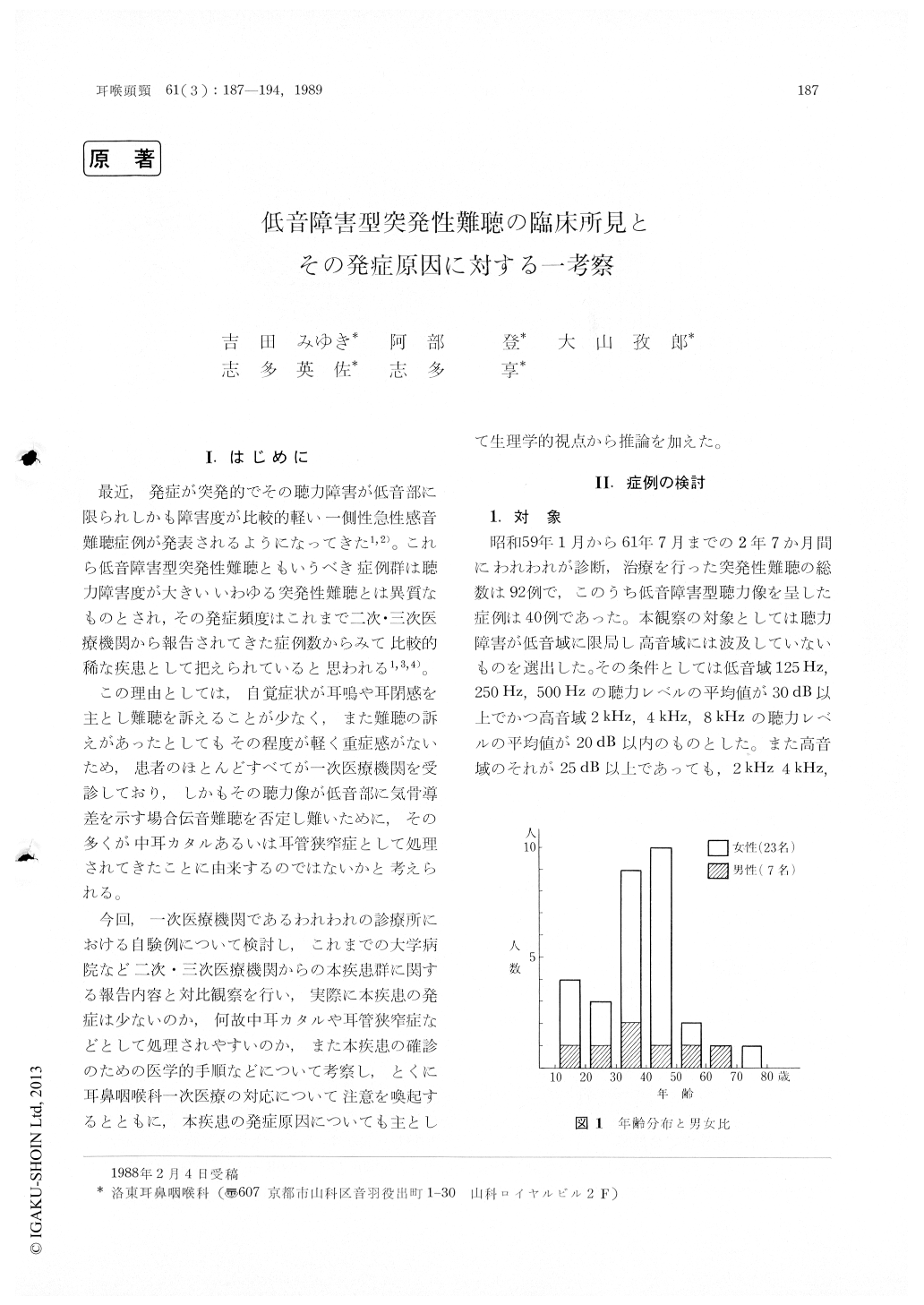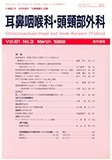Japanese
English
- 有料閲覧
- Abstract 文献概要
- 1ページ目 Look Inside
I.はじめに
最近,発症が突発的でその聴力障害が低音部に限られしかも障害度が比較的軽い一側性急性感音難聴症例が発表されるようになってきた1,2)。これら低音障害型突発性難聴ともいうべき症例群は聴力障害度が大きいいわゆる突発性難聴とは異質なものとされ,その発症頻度はこれまで二次・三次医療機関から報告されてきた症例数からみて比較的稀な疾患として把えられていると思われる1,3,4)。
この理由としては,自覚症状が耳鳴や耳閉感を主とし難聴を訴えることが少なく,また難聴の訴えがあったとしてもその程度が軽く重症感がないため,患者のほとんどすべてが一次医療機関を受診しており,しかもその聴力像が低音部に気骨導差を示す場合伝音難聴を否定し難いために,その多くが中耳カタルあるいは耳管狭窄症として処理されてきたことに由来するのではないかと考えられる。
From the clinical observations on sudden sensori-neural low tone deafness of 30 cases, it was con-cluded that this disease seems to be essentially heterogeneous one from the so-called sudden deafness which shows severe hearing loss in the wide range.
Because of tinnitus and sense of fullness on the ear, most of the patients have been misdiagnosed frequently as having conductive deafness such as due to stenosis of the Eustachian tube.
It should be emphasized that the accurate measurement for bone conduction in the lower frequency range is most important to determine whether or not this type of deafness is sensori-neural.
To make sure this procedure, the adequate masking must be carried out.
From a view-point of electrophysiological find-ings in the cochlea, it is reasonable that the onset of this sudden low frequency hearing loss can be attributed to the transient vascular dis-turbance which localized at the upper turn of cochlea.

Copyright © 1989, Igaku-Shoin Ltd. All rights reserved.


